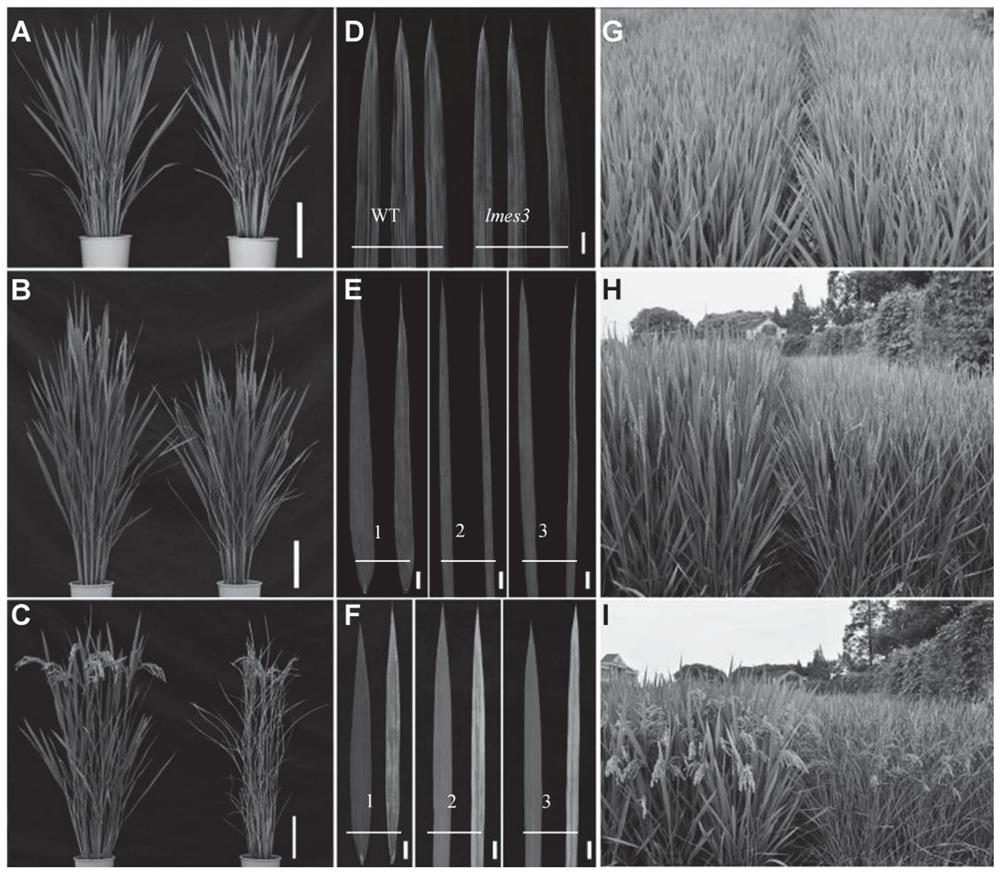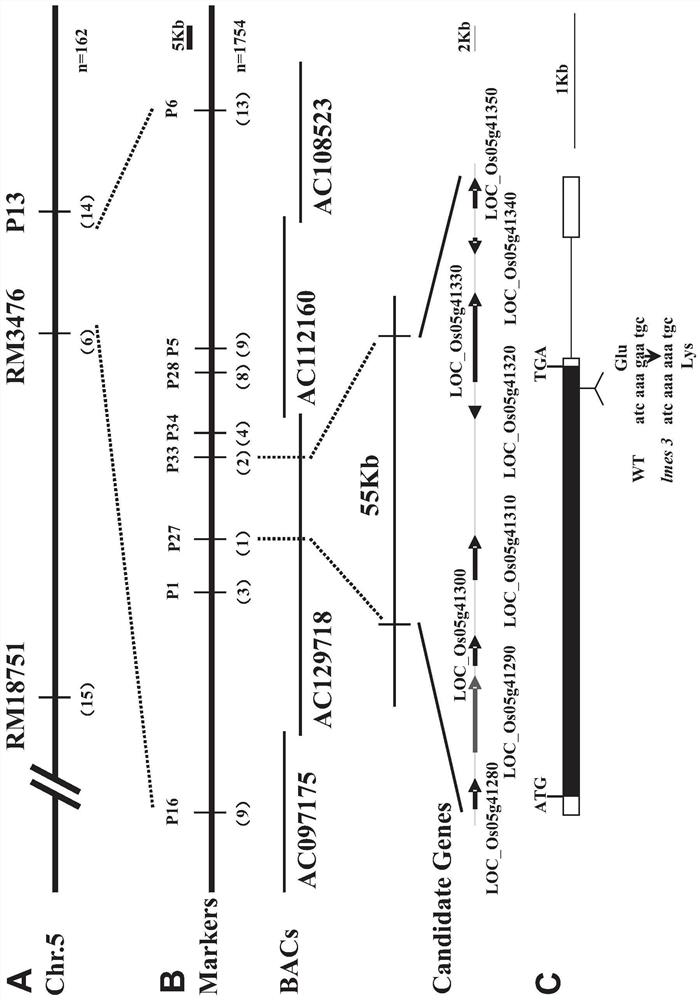Rice lesion aging regulation gene and application thereof
A technology for regulating genes and rice, applied in the field of agricultural biology, can solve problems such as the decline of cell proliferation and differentiation ability and physiological functions, the decrease of cell membrane permeability, and the impact cannot be restored.
- Summary
- Abstract
- Description
- Claims
- Application Information
AI Technical Summary
Problems solved by technology
Method used
Image
Examples
Embodiment 1
[0021] Example 1: Obtaining of Lesion-Like Progeria Mutant Materials
[0022] Through chemical mutagenesis of japonica rice variety Yundao 32 (Y32) by EMS, a lesion-like premature senescence mutant lmes3 (lesion mimic and early senescence 3) was screened. The traits of the mutant have been stably inherited after multiple generations of selfing, and the aboveground part of the seedling stage is normal, but the development of the root system is hindered; the leaves of the tillering stage appear rusty spots, and the number of spots increases with the growth of the plant; At the booting stage, the tip of the leaf begins to wither and turn yellow, showing a premature senescence phenotype; at the heading stage, the withered yellow starts from the tip of the leaf and continues along the edge of the leaf to the bottom of the leaf; at the mature stage, spots exist in succession, aging is accelerated, the leaves are all withered and yellow, and the whole plant is yellowish-brown until p...
Embodiment 2
[0024] Example 2: Population Construction and Genetic Analysis
[0025] The mutant lmes3 was used as the female parent to cross with japonica rice variety Nipponbare (NIP), indica rice variety Taichung Local No. 1 (TN1) and Nanjing No. 6 (NJ06), respectively, and the F 1The plants showed normal wild-type phenotype, indicating that lmes3 is controlled by recessive nuclear genes. Statistics F 2 Segregation population segregation ratio (Table 1), the results show that the segregation ratio of normal phenotype plants and mutant phenotype plants is close to 3:1 segregation by Chi-square test, which shows that the lesion-like premature senescence phenotype of lmes3 is caused by single hidden Sex nuclear gene control.
[0026] Table 1 Genetic analysis of lesion-like progeria mutant lmes3
[0027]
[0028]
Embodiment 3
[0029] Example 3: Fine mapping of the mutant gene LMES3
[0030] Using 163 pairs of SSR primers and STS primers evenly distributed on 12 rice chromosomes, the mutant and NJ06 were screened for polymorphism. Mutant pool was established by BSA method (F 2 About 20 single plants with mutant phenotypes were selected from the population, the leaves were weighed and mixed, and DNA was extracted). The screened molecular markers with better polymorphisms amplify the DNA of parents, F1 and mutant pools, and find the markers linked to the target gene; then use the markers that express linkage to analyze the genes of individual plants with mutant phenotypes in the F2 population Type, and initially confirm the chromosomal location of the target gene. Plant genomic DNA was extracted by CTAB method.
[0031] Use 10 μL system for PCR reaction: 1 μL DNA template, 5 μL 2×PCR MasterMix, 0.5 μL each for forward and reverse primers (10 μmol / L), add ddH 2 O to make up 10 μL. The PCR amplifica...
PUM
 Login to View More
Login to View More Abstract
Description
Claims
Application Information
 Login to View More
Login to View More - R&D
- Intellectual Property
- Life Sciences
- Materials
- Tech Scout
- Unparalleled Data Quality
- Higher Quality Content
- 60% Fewer Hallucinations
Browse by: Latest US Patents, China's latest patents, Technical Efficacy Thesaurus, Application Domain, Technology Topic, Popular Technical Reports.
© 2025 PatSnap. All rights reserved.Legal|Privacy policy|Modern Slavery Act Transparency Statement|Sitemap|About US| Contact US: help@patsnap.com



